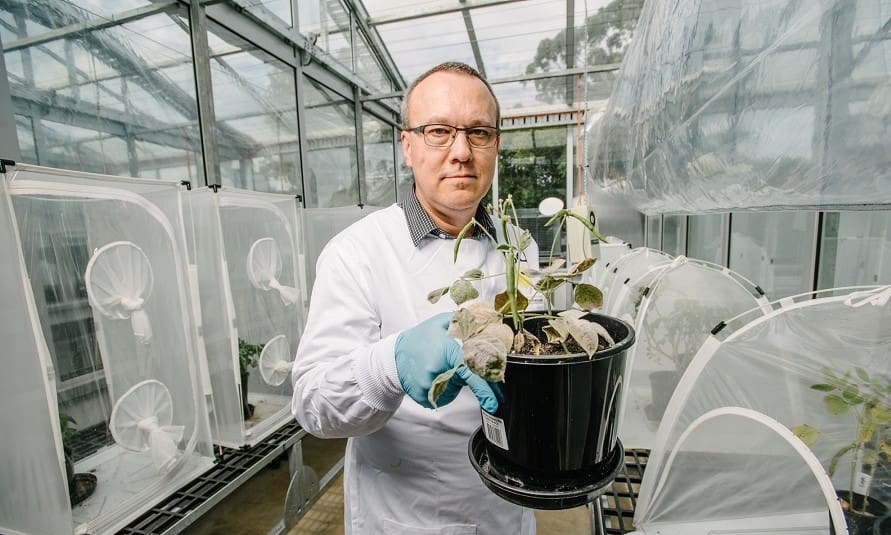
USQ’s Professor Levente Kiss is leading a study into powdery mildew.
A RESEARCH collaboration headed by the University of Southern Queensland’s Centre for Crop Health has uncovered results that could reshape how the origins of some plant pathogens in Australia are understood, as well as boost local biosecurity efforts.
Led by USQ’s Professor Levente Kiss, the study into powdery mildew aimed to provide the first comprehensive catalogue of all powdery mildew species present in Australia.
“It is well known that the majority of crop pathogens like fungi and bacteria we have in Australia today were introduced to the continent since 1788 when the First Fleet arrived,” Professor Kiss said.
“Our research has conclusively shown that all powdery mildews infecting native Australian plants actually came from overseas, which means Australia is a continent without any native powdery mildews.
“It can sometimes be hard in ecology to have immediate practical outcomes but now we have a truly clear picture of how native vegetation was affected after European colonisation.
“There are more than 900 species of powdery mildews known around the world and we’ve been able to use DNA barcoding to confidently declare that all of them were absent in Australia prior to colonisation.”
Recently published in the international journal Frontiers in Microbiology, Professor Kiss said the findings were significant from a biosecurity perspective.
“Through the collaboration of more than 30 scientists from more than 20 research institutions around the world, and with support from the Department of Agriculture, Water and the Environment and the National Plant Biosecurity Diagnostic Network, we have now been able to build an up-to-date list of all powdery mildew species currently in Australia,” he said.
“This is important because up until now such a list didn’t exist. While Australia continues to import a large amount of fresh fruit, vegetables, ornamentals, and other plant products from overseas that may be infected with these microbes, it’s vital we know which of them are already in the country.
“Of course, when we know what’s already in the country, it’s much easier to ensure better monitoring of all incoming fresh plant products and any new microbes that may threaten our crops or natives.”
Source: USQ



HAVE YOUR SAY